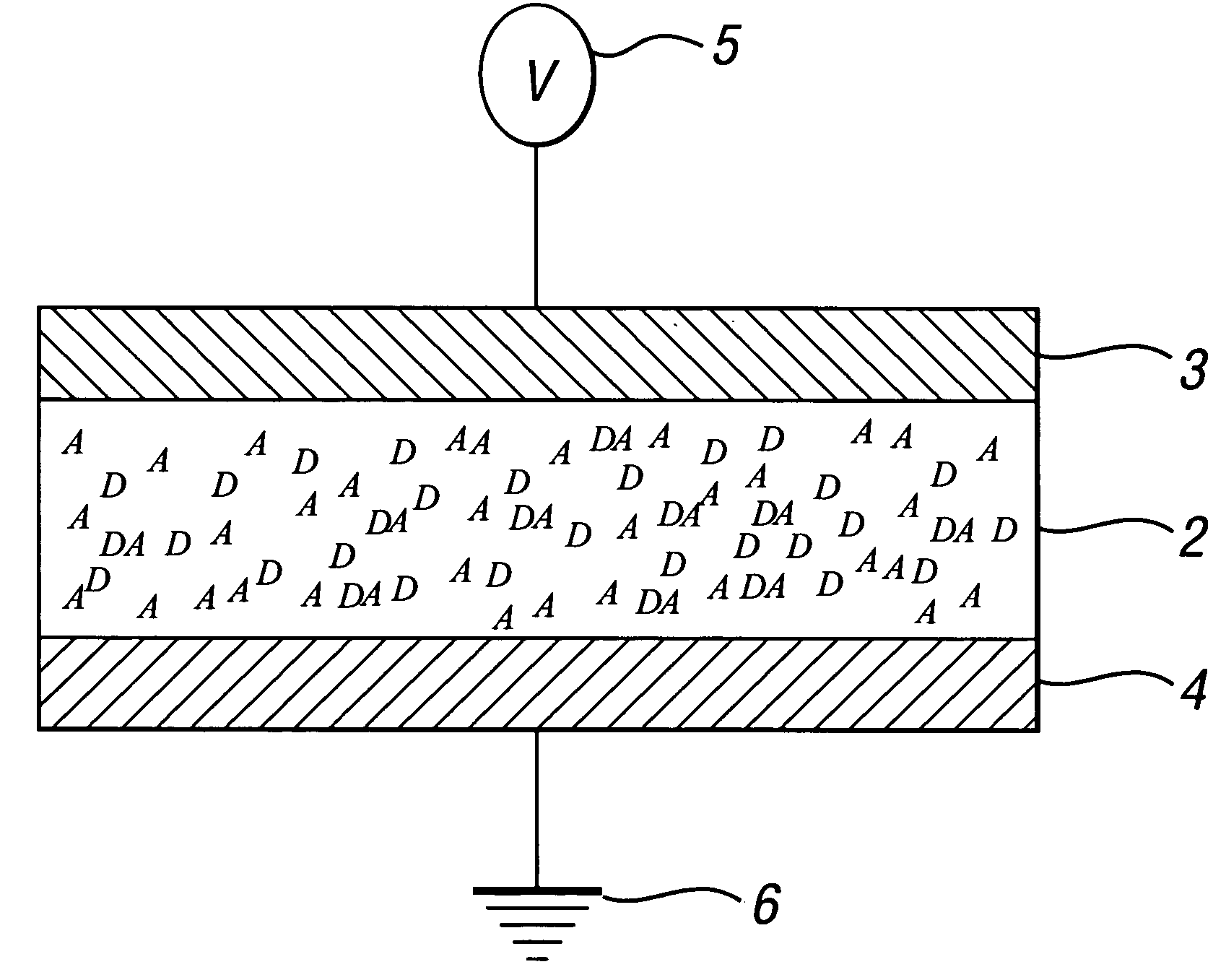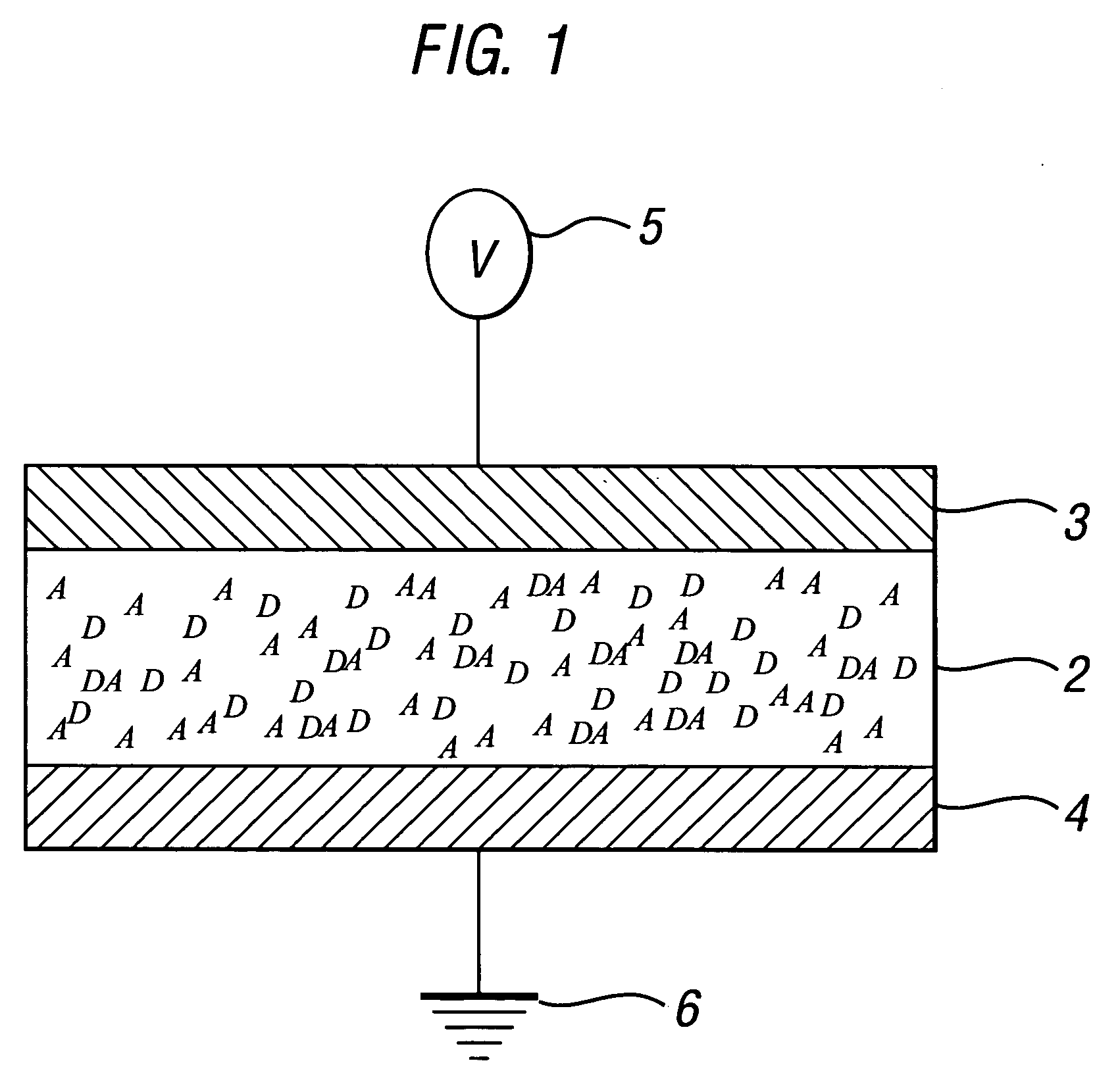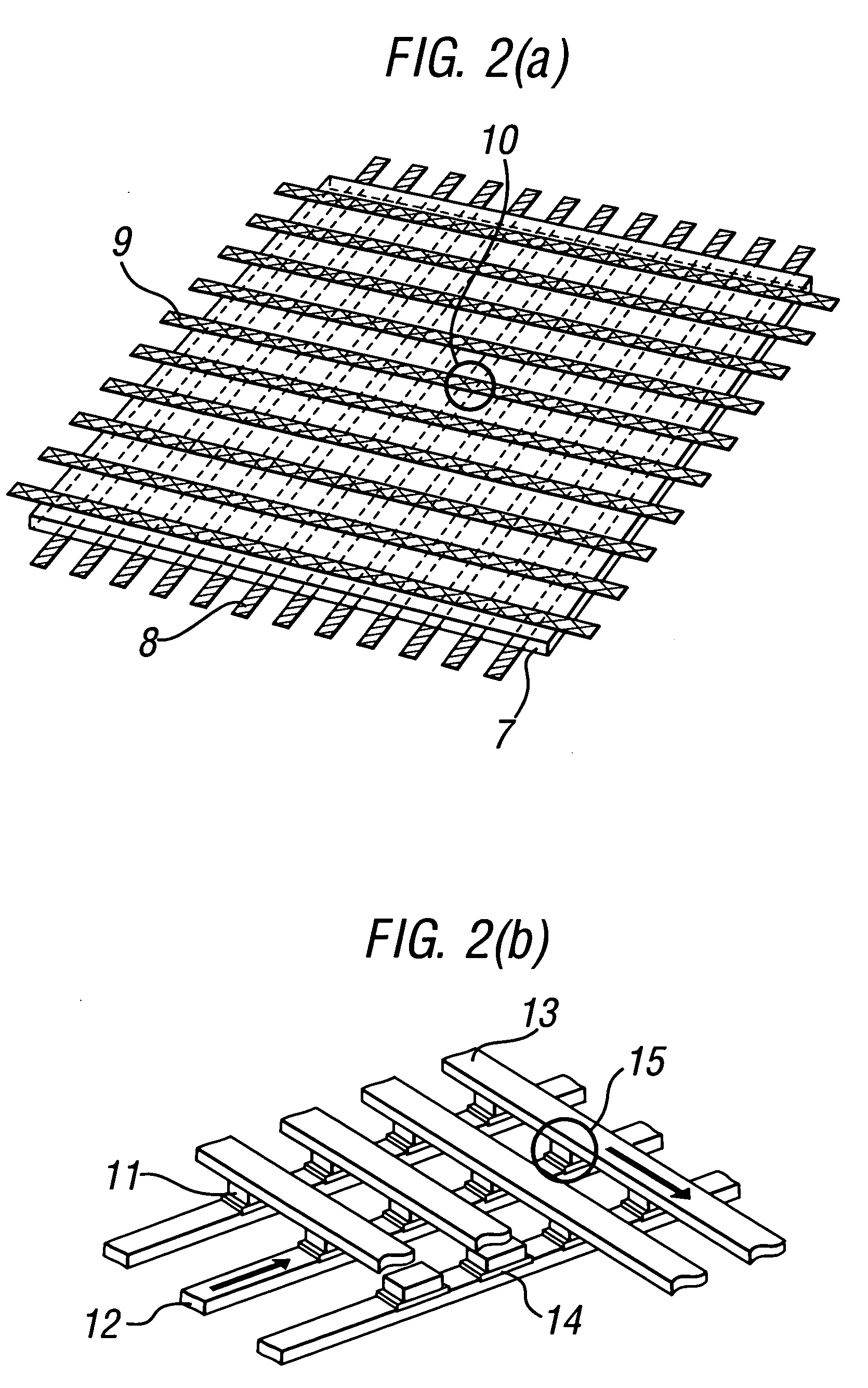Memory devices based on electric field programmable films
a technology of programmable films and memory devices, applied in thermoelectric devices, instruments, nanoinformatics, etc., can solve the problems of high fabrication cost, high power consumption, complex architecture,
- Summary
- Abstract
- Description
- Claims
- Application Information
AI Technical Summary
Benefits of technology
Problems solved by technology
Method used
Image
Examples
example 1
[0136] This example demonstrates the synthesis of gold nanoparticles used as electron donors. Gold nanoparticles were synthesized at room temperature using a two-phase arrested growth method detailed by M. J. Hostetler, et. al., Langmuir, 14 (1998) 17. In a typical synthesis, an aqueous solution containing 0.794 grams (g) (2 millimole (mmol)) of tetrachloroauric acid (HAuCl4.3H2O), in 50 milliliters (ml) of water was added to an 80 ml toluene solution containing 3.0 g (5.5 mmol) of tetraoctylammonium bromide. The mixture was stirred vigorously for 1 hour. To the separated toluene solution was added 0.81 g (4 mmol) of dodecane thiol (DSH). The resulting mixture was stirred for 10 minutes at room temperature. A 50 ml aqueous solution of sodium tetrahydridoborate (NaBH4) (20 mmol) was then added to the mixture over a 10 second period with vigorous stirring and the resulting mixture was further stirred for 1 hour at room temperature. The dark colored toluene phase was collected, washed ...
examples 2-18
[0137] Different sized nanoparticles were obtained by varying the temperature of reduction during the addition of NaBH4 solution and subsequent stirring. Different sized nanoparticles were also obtained by varying the addition time of the NaBH4 solution or the molar ratio of DSH to HAuCl4.3H2O. Results are summarized in Table 2 below.
TABLE 2NaBH4radiusDSH / AuTemperatureaddition timeof gyrationExampleMolar ratio(° C.)(sec)(nm)20.220101.731.120101.2942202551.3652205001.3762205001.417255101.3282552061.3590.2552061.95101.28555001.3411290101.34120.290102.16131.190101.44141.1902551.39150.2205001.99160.2905002.73172905001.33182902551.31
example 19
[0138] This example demonstrates the synthesis of 9-anthracenemethyl methacrylate. A two liter, 3-necked round bottomed flask was equipped with a condenser, dropping addition funnel, mechanical stirrer, and gas inlet tube. The flask was charged with 9-anthracenemethanol (48.9 grams, 0.235 mol) and purged with nitrogen for 10 minutes. Anhydrous tetrahydrofuran (300 ml), pyridine (33 mL), and triethylamine (50 mL) were added to the flask, and the resulting solution was cooled to 0° C. Methacryloyl chloride (technical grade, 37.5 ml, 40.1 grams, 0.345 mol) was added using a syringe into the addition funnel, and added slowly dropwise to the vigorously stirring solution over the course of 1 hour. A brownish precipitate formed and aggregated into a gummy mass, which periodically interfered with stirring. The reaction was kept at a temperature of 0° C. for 2 hours and was then allowed to gradually warm up to room temperature overnight. The reaction was quenched with water (400 ml). Ethyl e...
PUM
| Property | Measurement | Unit |
|---|---|---|
| thickness | aaaaa | aaaaa |
| dielectric constant | aaaaa | aaaaa |
| wavelength | aaaaa | aaaaa |
Abstract
Description
Claims
Application Information
 Login to View More
Login to View More - R&D
- Intellectual Property
- Life Sciences
- Materials
- Tech Scout
- Unparalleled Data Quality
- Higher Quality Content
- 60% Fewer Hallucinations
Browse by: Latest US Patents, China's latest patents, Technical Efficacy Thesaurus, Application Domain, Technology Topic, Popular Technical Reports.
© 2025 PatSnap. All rights reserved.Legal|Privacy policy|Modern Slavery Act Transparency Statement|Sitemap|About US| Contact US: help@patsnap.com



